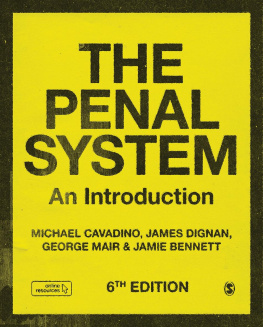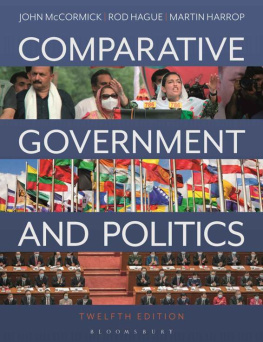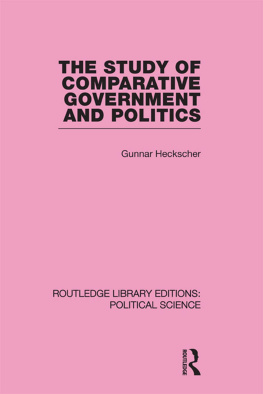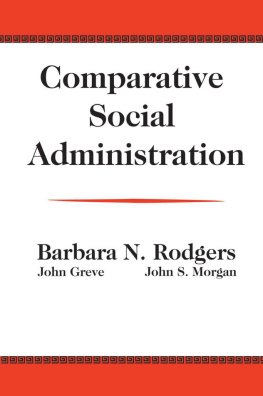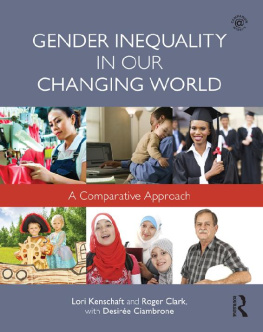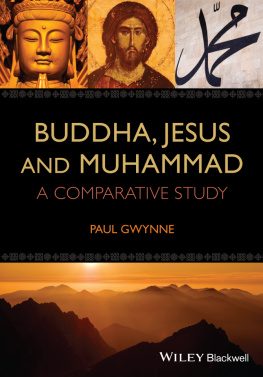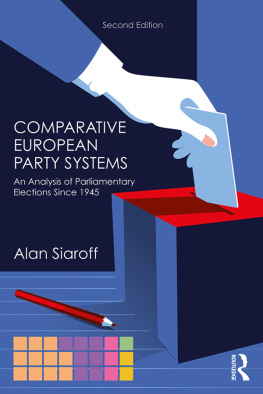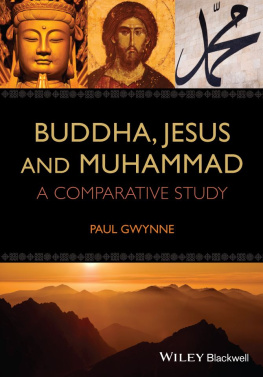Penal Systems
A Comparative Approach
Michael Cavadino and James Dignan
With Don Anspach, Robert Cario, Frieder Dnkel,
Raimo Lahti, Tadashi Moriyama, Vania Patan, John Pratt,
Wim Valkenburg, Dirk van Zyl Smit, Hanns von Hofer
and Andrew McLean Williams
Michael Cavadino and James Dignan 2006
First published 2006
Reprinted 2006 (twice), 2008, 2009
Apart from any fair dealing for the purposes of research or private study, or criticism or review, as permitted under the Copyright, Designs and Patents Act, 1988, this publication may be reproduced, stored or transmitted in any form, or by any means, only with the prior permission in writing of the publishers, or in the case of reprographic reproduction, in accordance with the terms of licenses issued by the Copyright Licensing Agency. Inquiries concerning reproduction outside those terms should be sent to the publishers.
 | SAGE Publications Ltd
1 Olivers Yard
55 City Road
London EC1Y 1SP |
SAGE Publications Inc.
2455 Teller Road
Thousand Oaks, California 91320 |
SAGE Publications India Pvt Ltd
B1/I 1 Mohan Cooperative Industrial Area
Mathura Road, New Delhi 110 044
India |
SAGE Publications Asia-Pacific Pte Ltd
33 Pekin Street #02-01
Far East Square
Singapore 048763 |
British Library Cataloguing in Publication data
A catalogue record for this book is available from the British Library
ISBN: 978-0-7619-5202-2 (hbk)
ISBN: 978-0-7619-5203-9 (pbk)
Library of Congress Control Number available
Typeset by C&M Digitals (P) Ltd., Chennai, India
Printed on paper from sustainable resources
Printed and bound in Great Britain by Athenaeum Press Ltd., Gateshead, Tyne & Wear
Foreword
by David Downes
The comparative study of crime and punishment, which languished for much of the past century, underwent a marked revival over the past two decades. The case for comparative method is overwhelmingly strong. Robust, commonsensical beliefs, such as that capital punishment obviously deters people from murder, can only be tested and, in this case, found to be hugely misconceived, by painstaking contrasts over time and between different societies. But the pitfalls facing comparative study are immense, and help to account for its relative rarity. Gathering data about different societies, with their varying languages, cultures, and institutional structures, is far more complex than focusing on one society alone, difficult as that may be. It is all too easy for comparative projects to run into the sand, gathering mountains of data with no clear basis for their analysis, or falling prey to criminological tourism, a resort to superficial indicators of what is going on in crime and punishment terms in a range of societies. And some comparative studies do not really compare but merely collect together singular and largely unrelated studies of crime and punishment in different societies. These may be valuable in their own right, but they do not add up to more than the sum of their parts. This is precisely what the present authors have achieved. In surmounting these pitfalls, they demonstrate how the promise of comparative penology can be fulfilled.
Mick Cavadino and James Dignan deal successfully with these pitfalls by several key methods. They have evolved from the work of their predecessors, not least Rusche and Kirchheimer (1939), a broad theory of the likely links between criminal justice policies and penal systems, on the one hand, and the nature of a societys political economy, on the other. They weigh this perspective against a selected range of societies, at least one from each continent, avoiding ethnocentrism by working with colleagues who are leading experts in the field in the societies concerned. They thus maintain a common authorial voice, allow for diverse opinions about the interpretation of key developments, but do not lose the plot. They also gain greatly from the inter-disciplinary character of their work. Their typology of political economy is highly informed by recent work in comparative social policy. Overall, the book is knitted together, despite the wealth of meticulous detail, by a style which conveys complex ideas and analysis with fluency and apparent ease.
All in all, this is a major, and should prove a seminal book, providing a template for the analysis of penal policy and political economy, which in future could be fruitfully extended both to other societies and to changes in those studied here. It could hardly be more timely, as penal policy in the USA at least is now a factor in international relations. The 2000 presidential election pivoted on the results in Florida, which were crucially influenced for Bush and against Gore by the huge numbers of pro-Democrat black and hispanic constituents denied the chance to vote by penal and felon disenfranchisement.
For the first time since the transportation of prisoners came to an end, penal policy is no longer a purely domestic affair, but a field that has ramifications for world politics. It is also now so big a factor that domestically it has become a force for changing the political economy rather than simply being a peripheral outcome. The relation has become a two-way, interactive process, as the authors stress, with the prison budget severely denting those for health and education in states such as California.
It would be all too easy, given this scale of penal increase in the worlds most powerful nation, to end on an apocalyptic note. And it is indeed a key question as to whether the USA is a harbinger or an outlier in terms of penal futures for societies which have traditionally embraced far more sparing penal policies, practices and regimes. Cavadino and Dignan resist that lure. They are rightly measured and judicious in their predictions, all too aware of the dangers of mass imprisonment but also of the scope for resistance and reform. Some societies, Sweden, Finland and Japan, for example, despite recent increases in their prison population, and despite their chapter on Japan being an eye-opener for those who thought its low crime and imprisonment rate stemmed from reintegrative shaming, present a very different set of possibilities. It is for its attention to the peculiar character of each countrys penal culture, which is replete with fascinating variations, as well as for its analysis of over-arching trends, that this book should command a close reading and a wide readership.
David Downes
Mannheim Centre for Criminology and Criminal Justice
London School of Economics


